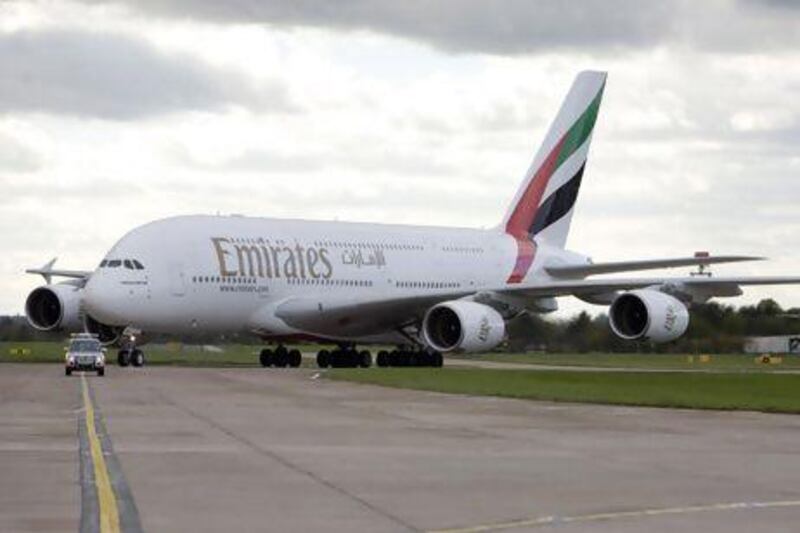Emirates Airline is evaluating new, lighter versions of the A380 superjumbo as it plans to expand its network, which has been constrained by a lack of landing slots and space at its Dubai base.
Emirates, the biggest customer of the Airbus SAS plane, is mulling flights to Houston, Los Angeles and San Francisco with the A380 after Dubai Airports opened its first superjumbo concourse this month.
The Dubai-based carrier is looking at whether it can fly the superjumbos to the United States destinations, beyond the limits of the aircraft's original design, by making use of new, lighter variants of the plane and cutting back on-board water usage, President Tim Clark said today.
"The economics of Houston are very powerful," he said. "That would be an extremely attractive proposition."
Emirates has already announced additional daily A380 flights to New York's John F. Kennedy and Paris's Charles de Gaulle airports on January 1, and added a fifth daily flight to London on December 10.
Emirates, the only carrier with showers on a scheduled commercial aircraft service in its first-class A380s, is only using about 60 per cent of the water it carries and could save as much as four tons by shrinking the tank, said Mr Clark.
Extensions to its long-haul network quickly use up aircraft capacity, giving the carrier ability to fill another 30 planes, Mr Clark said.
"If you've got a global operation and you're flying to places like Houston, each of those Houston frequencies is 2.5 aircraft," he said. "Do that to Sydney twice a day or Melbourne twice a day, places like that, and you gobble up aircraft units before you know it."
Curfews in destination airports and limits on airspace in the United Arab Emirates are the main constraints on lifting its current A380 order of 90 aircraft to 120, said Mr Clark. The carrier is studying "ways and means" to increase that cap on capacity for the A380, the world's biggest commercial jet, he said.
"We know what we want to do, we know where we could put more than 90 A380s today," he said. "It's a question of can we actually fit them in?"
In September, the Middle East carrier announced an agreement with Qantas, Australia's biggest airline for cooperation. Emirates has resisted joining one of three global airline alliances in favor of taking on older network carriers with the largest fleet of double decker A380s.
That strategy took a step forward on January 2 when Dubai International Airport opened the first four of 20 gates at an Emirates-only A380 superjumbo concourse as part of a project to boost capacity by 25 per cent to 75 million passengers.
While runways will eventually be a constraint, the main issue at present is the availability of landing slots at suitable times in Emirates' destination airports and managing air traffic in the UAE, also home to Abu Dhabi-based Etihad Airways and budget carrier FlyDubai, Clark said.
Emirates added 15 destinations in 2012, including Rio de Janeiro, Buenos Aires, Barcelona and Seattle.
"The airspace management around us, that's proving to be quite complex," he said. "We've got many carriers in the UAE growing at quite a pace."
* Bloomberg News





